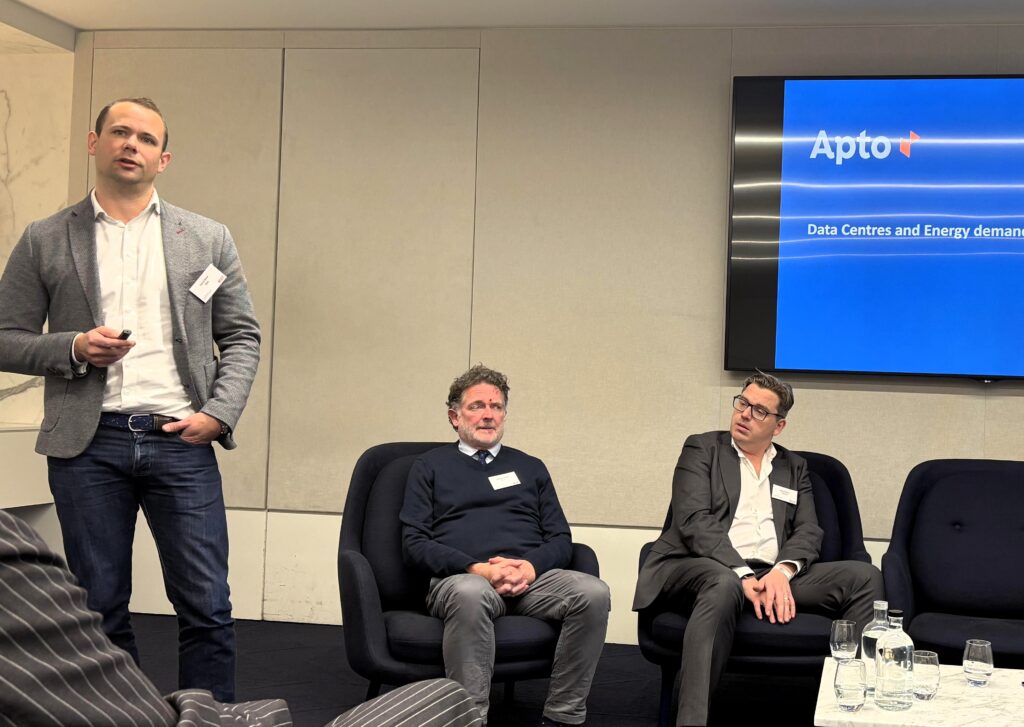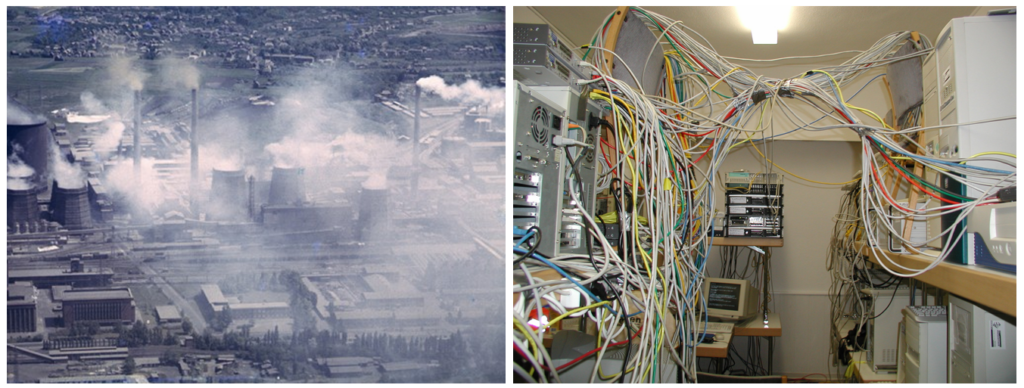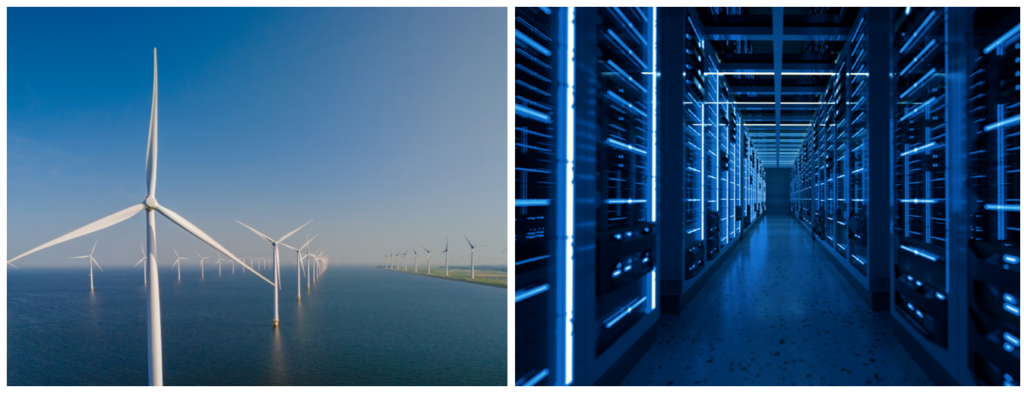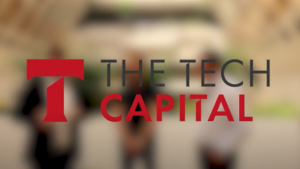By David West, Chief Finance Officer at Apto
Speaking at the Centrus and BCLP lunch on ‘Investment and Risk Management Strategies to Secure Green Energy,’ – 22 January 2025.

At Centrus and BCLP’s recent lunch event, experts from across industries came together to tackle one of today’s most pressing challenges: how to secure green energy while managing investment and risk.
Speaking alongside specialists from renewable energy, legal and investment sectors, I had the chance to bring a data centre perspective to the table—a vital part of the conversation, given the sector’s role as both a cornerstone of the digital economy and a major energy consumer.
Data centres are growing fast, fuelled by demand for cloud services, AI and digital transformation. But with growth comes responsibility—balancing this demand with sustainable energy practices and working within the limits of infrastructure designed for another era. At the intersection of these challenges lies enormous opportunity for innovation, partnership and progress.
The centralise-decentralise conundrum
The story of data centres is one of evolution. What began as servers hidden in backrooms has become vast, hyperscale facilities that underpin global connectivity. This has put pressure on aging power systems. The energy systems of the past were designed around coal-fired power stations, located near raw materials or urban centres to power industry efficiently.

Today, the shift to decentralised renewables like wind and solar—often far from energy consumption—has created a disconnect for industries with centralised energy demands, such as data centres.
While the International Energy Agency’s data showed data centre energy consumption flattening—due to server efficiency improvements and centralisation—the emergence of AI has led to uncertainty around future growth. Despite this, challenges persist due to the decentralised grid and the pressing need for infrastructure investment.

In cities like London, Dublin and Amsterdam, energy grids are reaching their limits and in some cases new data centres can’t be connected at all.
This isn’t just a matter of supply—it’s about aligning energy production with consumption. Today’s energy infrastructure wasn’t built to handle the concentrated demands of modern data centres or the fast-paced growth of technologies like AI.
Rethinking solutions
Co-locating data centres near renewable energy sources, such as wind farms or hydropower, is a logical solution. However, Europe presents unique hurdles. While remote locations offer cheaper land and access to renewable power, they can present other challenges. AI adds a layer of complexity and opportunity. Training AI models in remote data centres powered by low-cost renewable energy could reduce pressure on urban grids. Yet, key AI applications—like real-time decision making—still require proximity to users, as low latency is critical. This demand keeps data centres tethered to metro areas, reinforcing the need to align energy infrastructure with urban energy requirements.
Powering progress: Smart energy strategies
Data centres are uniquely positioned to secure long-term Power Purchase Agreements (PPAs) with energy providers due to their predictable energy consumption and creditworthiness. These agreements not only deliver price certainty but also help finance new green energy projects, ensuring stable and sustainable energy supply.
Meanwhile, hyperscale giants are redefining energy procurement by directly managing their own energy strategies. From securing bespoke PPAs to investing in renewable energy infrastructure, they are shaping how energy partnerships evolve. Operators must remain agile, balancing the needs of their customers while continuing to support the broader sustainability objectives of the sector.
The case for innovation
Innovation will play a role in closing the gap between energy supply and demand. Small Modular Reactors (SMRs) offer a potential solution, providing localised nuclear power for energy intensive operations like data centres. While SMRs are gaining traction in the US, where remote locations make them easier to deploy, Europe faces more hurdles. Europe could explore co-locating SMRs near existing nuclear facilities, where public acceptance is higher, to overcome some of these challenges—provided the locations also meet operational needs like fibre connectivity and proximity to users.
Beyond nuclear, the sector is also exploring other innovative solutions, but this kind of bold thinking is essential. The data centre sector isn’t just about keeping the lights on—it’s about meeting future demands in a way that’s smarter, greener and more efficient.
A call to collaborate
The challenges ahead are big, but they’re also opportunities to innovate and lead. For data centres to continue fuelling the digital economy while meeting sustainability goals, collaboration will be key. Data centre operators, energy providers and governments must work together to unlock grid capacity, streamline energy connections and scale up renewable solutions.
At Apto, we’re excited to be part of this journey. As we develop data centres across Europe, our focus is on building the infrastructure needed to support hyperscale customers while driving progress toward a more sustainable future.
This is a pivotal moment. The way we approach energy and investment today will shape the digital economy of tomorrow. Together, we can ensure growth and sustainability go hand in hand, delivering not just solutions to today’s challenges but a blueprint for the future.



